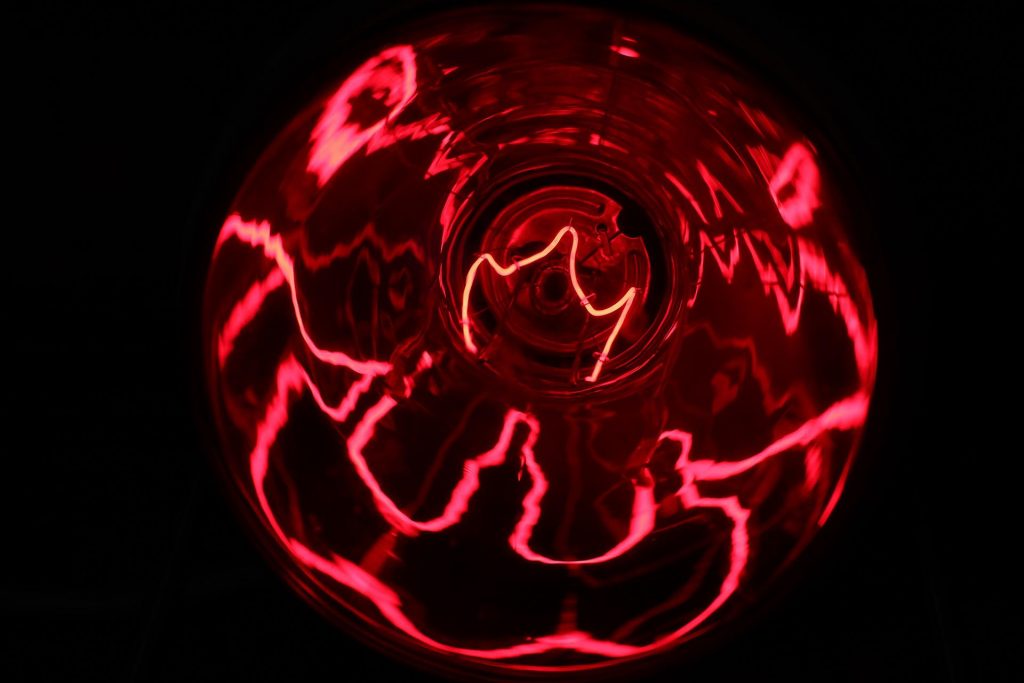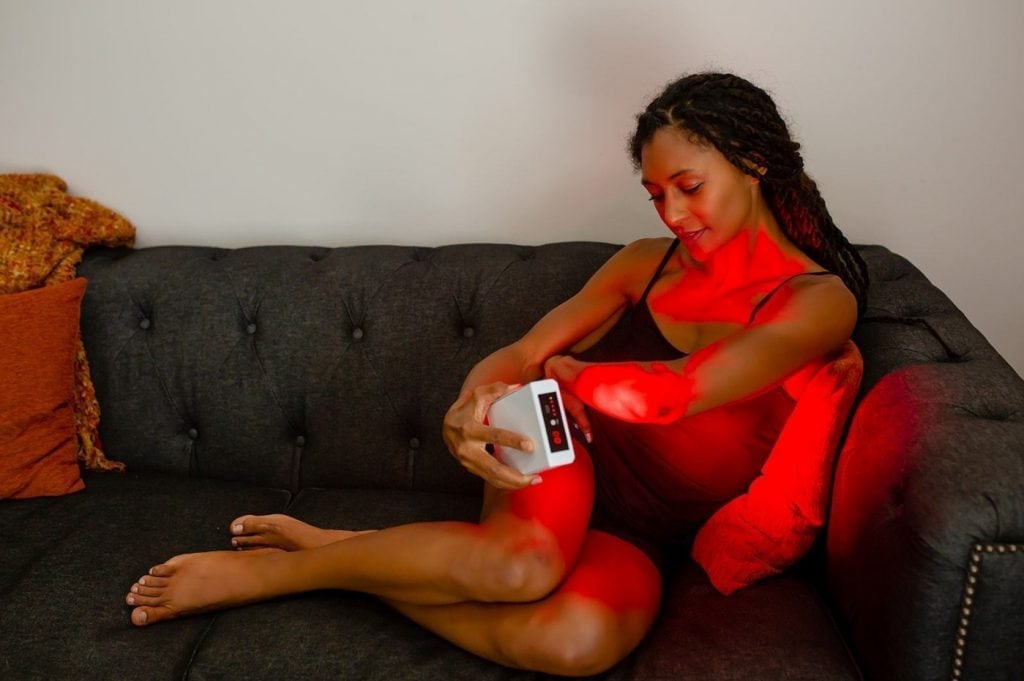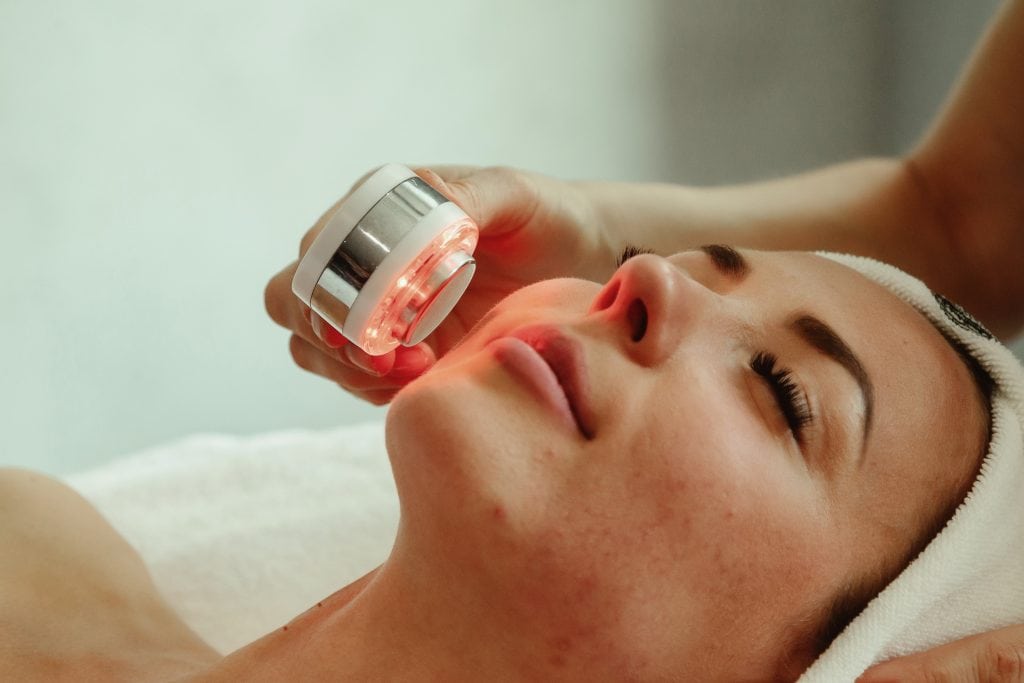Thousands of academic papers prove the powerful benefits of infrared light therapy. However, this isn’t a new craze. Humans have been treating various diseases with red light for centuries.

So although there are countless benefits, this post gathers the 10 that stand out. I’ll also go through how it works and answer some commonly asked questions.
How does red light therapy work?
In short, infrared light therapy works by enhancing mitochondrial function, improving your overall quality of life.
All living things need energy to survive, and for us, this energy is in the form of adenosine triphosphate or ATP. This ATP provides energy that powers almost all bodily functions.
Red light helps your body produce more ATP since it has a wavelength of 600 to 1100 nanometers. These frequencies transmit well into our body’s tissues. Near-infrared light can even penetrate into organs and bones, stimulating ATP.
In comparison, blue light coming from our screens only enters the first layer of skin.
An easy way to understand this is to take out your phone’s torch and place your finger on it. You’ll notice a distinctive red glow. This is because only red light frequencies can penetrate your entire finger.
This penetration increases ATP production, leading to powerful health benefits.
10 Potential Red Light Therapy Health Benefits
Here are 10 health benefits of infrared light that stood out to me:
- Better blood circulation
- Faster exercise recovery
- Improved heart health
- Less diabetic complications
- Reduced inflammation
- Fights cancer cells
- Eases psoriasis symptoms
- Improved mood
- Better wound healing
- Lessens hay fever symptoms
Better Blood Circulation
Mitochondria makes ATP using oxygen and glucose and carries it to cells through blood flow.
Patients suffering from neuropathy have decreased blood flow because they don’t have enough oxygen and glucose to transport ATP. Nerves sense this and send pain signals to the brain. Sometimes, these signals are a lack of sensation. That’s why a common neuropathy symptom is a lack of feeling in limbs.
But this is where low level laser therapy can improve blood circulation. Because the mitochondria are sensitive to light, the red light stimulates ATP, improving blood flow. This results in better athletic performance, lower blood pressure and a higher quality of life.
Faster Exercise Recovery
Muscle recovery is the most essential part of your training because if your muscles are recovering faster, you can hit the gym sooner and harder. It’ll also reduce your risk of injury in follow-up sessions.
Luckily, a 2013 study shows that exposing muscle tissue to near infrared light treatment for a few minutes per day boosts recovery.
This study took two groups of participants and did eccentric muscle training. Researchers then exposed one group to red light while the other used a placebo.
For the next few days, researchers tested for markers like:
- Muscle soreness
- Force production
- Range of motion
They found that the red light therapy group experienced less muscle soreness, produced more force during workouts and worked their muscles through a greater range of motion than the placebo group.
Improved Heart Health
A 2021 study conducted by the Frontiers in Cardiovascular Medicine found that exposing mice with heart failure to infrared therapy improved their condition. It increased cardiac function, reduced pulmonary edema and inhibited
This study used mice, so we shouldn’t take it as concrete evidence; but we also shouldn’t dismiss these promising results completely. We know that infrared waves reduces inflammation, and since inflammation is a significant cause of heart disease, this could be how red light helps heart disease.
Researchers at the University of Colorado Anschutz Medical Campus also found that red light boosts a gene that protects against heart attacks.
Read our guides covering the benefits of infrared sauna and the best sauna picks for home!
Less Diabetic Complications
Diabetes is a chronic condition that results in a high glucose concentration in the blood. This is due to the pancreas’ impaired ability to make insulin, a hormone that’ll usually transport glucose to cells.
You get three types of diabetes:
- Type 1 diabetes
- Type 2 diabetes
- Gestational diabetes
Regardless of what type you have, you can improve your quality of life and reduce diabetic symptoms with low power laser therapy.
A significant side effect of diabetes is poor wound healing. Fortunately, several studies show that exposing a wound to red light and near-infrared light speeds up recovery.
Also, diabetes reduces your body’s nitric oxide production, an essential compound found to increase blood flow.
This is why peripheral arterial disease is common amongst diabetics. Low nitric oxide levels narrow blood vessels, restricting blood flow to limbs. Luckily, exposing your feet to red light improves blood flow, promoting pain relief.

Reduced Inflammation
Inflammation is our body’s natural response to threats. But today, we’re eating so many processed foods our bodies are always in a state of defense. This is chronic inflammation, and it’s a significant marker behind almost every disease like heart disease and cancer.
Fortunately, red light therapy reduces inflammatory cytokines in your body and improves blood flow to damaged tissues. It also boosts your natural antioxidant defense, lowering the risk of mortality.
Fights Cancer Cells
Photodynamic therapy or PDT is a unique style of treatment that uses red light to destroy abnormal cells, usually cancerous ones. Research done on neck cancer patients also shows that exposing red light to cancer cells creates a highly reactive form of oxygen, surrounding cancer cells and killing them while leaving neighboring cells intact.
Eases Psoriasis Symptoms
Psoriasis is a chronic autoimmune skin disease that causes rapid turnover of skin cells resulting in painful scales called plaques. Like rheumatoid arthritis and other autoimmune health conditions, there’s no cure for psoriasis, but red light therapy can help manage symptoms.
The Journal of the European Academy of Dermatology and Venereology released a study in 2011 that found infrared radiation is an effective treatment option for psoriasis patients.
Improved Mood
Unlike ultraviolet light, red light therapy stimulates the part of your brain responsible for the circadian rhythm, improving sleep quality. This deeper sleep is a major factor behind improved mood because when you’re well-rested, you’re more energized and productive.
Make sure to read our guide to the benefits of grounding as well!
Better Wound Healing
A peer-reviewed 2016 study found red light helped heal wounds faster. They concluded that red light therapy improved blood flow and reduced inflammation, giving your body’s cells the fuel needed to quickly repair tissue. Infrared light therapy also promotes intradermal
This is also why red light therapy is beneficial to diabetics. Since diabetics take longer to heal wounds, red light can help speed up the process, decreasing the risk of infection.
Lessens Hay Fever Symptoms
Hay fever is simply an allergy to pollen, a powder that plants release in tiny amounts during summer and spring. This allergy results in consistent sneezing and watery eyes.
Multiple brands use red light therapy to reduce hay fever symptoms by inserting two nasal probes that emit red light into your nose. Although this form of treatment is still new, the research looks promising.
What Are The Risks?
There are no short-term risks to regular red light therapy sessions. But there’s conflicting evidence about red light’s effect on eye health. Some studies show it’s 100 percent safe for your eyes while most brands recommend using protective goggles.
So just to be safe, use eye protection before red light therapy.
Also, some patients have reported minor burns after using red light panels and falling asleep with them on. This is why it’s crucial to get a light that offers an automatic timer. This way, you can fall asleep in front of the unit, and it’ll switch off automatically.
Patients also reported red light burns after using defective panels. But these risks are easily eliminated by shopping for a reliable red light therapy device like the JOOVV or Mito.
Read our review covering the 10 best red light therapy devices in 2022.

What Does It Treat?
Regular red light therapy reduces acne, wrinkles, redness and scarring by boosting
But red light therapy is also found to reduce inflammation, improve heart health, help manage diabetes, speed up muscle recovery and increase blood circulation.
Final Thoughts On Red Light Therapy Benefits
Low level light therapy isn’t something new. Civilizations have been using it for thousands of years to treat various skin problems and diseases. And as scientists began researching red light over the last 50 years, they’ve found it reduces pain and inflammation, increases blood flow and improves wound healing.
If you’re looking to implement red light therapy into your daily self-care routine, consider getting a red light panel and use it three to five times per week to give yourself the best chance of experiencing these benefits.
Written by
Matt Gaedke
Matt is a former college basketball player turned computer engineer who discovered his passion for health and nutrition after cutting sugar from his diet in 2016. That year he founded KetoConnect with Megha in order to share their ketogenic lifestyle through recipes, videos, and educational content. Matt is always seeking to grow and try new things, a passion he shares with his wife and two amazing sons.

